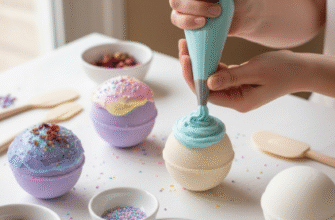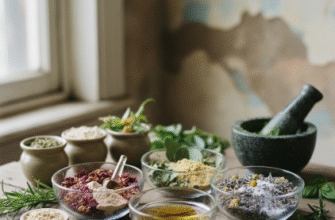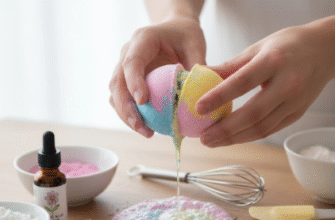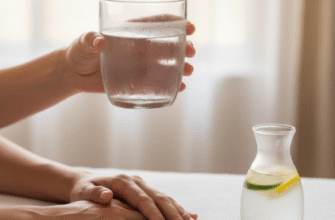Keeping hands clean is a fundamental part of staying healthy, but soap and water aren’t always within reach. That’s where hand sanitizer comes in handy – a quick squirt can offer some peace of mind when you’re on the go. While commercially available sanitizers are plentiful, there’s a certain satisfaction, and sometimes even practicality, in making your own. Crafting a simple hand sanitizer gel using an aloe vera base is surprisingly straightforward and allows you to control the ingredients, particularly if you have sensitive skin or prefer specific scents.
This project involves working with high-proof alcohol, so safety and accuracy are paramount. It’s not just about mixing things together; it’s about creating a product that is formulated correctly. The goal is a gel that feels pleasant on the skin, thanks to the soothing properties of aloe vera, while containing a sufficient concentration of alcohol to effectively cleanse your hands. Plus, whipping up a batch can be a fun and productive little DIY endeavor.
Why Bother Making Your Own Hand Sanitizer?
You might wonder why anyone would make hand sanitizer when it’s so readily available. There are actually several compelling reasons:
Ingredient Awareness: When you make it yourself, you know exactly what’s going into the bottle. Commercial sanitizers can contain fragrances, dyes, or other additives that might irritate sensitive skin. A DIY version lets you keep it simple or add only ingredients you trust.
Customization: Prefer a specific scent? Add a few drops of your favorite essential oil (being mindful of skin safety, of course). Want extra moisturizing properties? You can incorporate a tiny bit of vitamin E oil or glycerin. DIY allows for personalization that store-bought options don’t offer.
Learning Experience: For those who enjoy DIY projects, making hand sanitizer is a practical application of basic mixing principles. It demonstrates the importance of ratios and careful measurement in achieving a desired outcome.
Potential Cost Savings (Sometimes): Depending on the cost of ingredients in your area and whether you buy in bulk, making your own sanitizer *can* be more economical in the long run, especially if you use it frequently. However, initial setup costs for quality ingredients should be considered.
Availability: While less of an issue now than previously, there have been times when commercial hand sanitizers were difficult to find. Knowing how to make a basic version yourself provides a backup option.
Gathering Your Supplies: Ingredients and Equipment
Before you start mixing, you’ll need to gather a few key items. Precision is important here, especially with the alcohol concentration.
Essential Ingredients:
- Isopropyl Alcohol (Isopropanol): This is the active ingredient. You absolutely need a high concentration – ideally 99% or at least 91%. Rubbing alcohol commonly sold at 70% is *not* strong enough, because you’ll be diluting it with aloe vera. The final mixture needs to contain at least 60% alcohol to be effective for hand cleansing purposes according to public health recommendations. Using a lower concentration alcohol to start will result in a final product that is too weak.
- Aloe Vera Gel: Look for pure aloe vera gel, preferably without added colors or heavy fragrances. This acts as the base, thickens the mixture into a gel, and provides moisturizing properties to counteract the drying effect of the alcohol. Check the label to ensure it’s mostly aloe.
Optional Add-ins (Use Sparingly):
- Essential Oils: For fragrance. Popular choices include tea tree (known for its cleansing properties, but use cautiously as it can be potent), lavender (calming), peppermint (refreshing), or orange (uplifting). Use only a few drops – too much can irritate the skin or make the mixture sticky. Always choose high-quality, skin-safe essential oils.
- Vitamin E Oil or Vegetable Glycerin: For extra moisturizing. Just a small amount (like half a teaspoon per cup of sanitizer) can help combat dryness. Too much will make the sanitizer feel greasy or sticky.
Necessary Equipment:
- Clean Mixing Bowl: Glass or stainless steel is preferable. Ensure it’s completely clean and dry.
- Measuring Cups and Spoons: Accuracy is key! Use standard measuring tools.
- Whisk or Spoon: For thorough mixing. A whisk helps incorporate the aloe gel smoothly.
- Funnel: To easily transfer the finished gel into storage bottles without spills.
- Clean Storage Bottles: Small, reusable plastic or glass bottles with pump dispensers or flip-top caps work best for portability and use. Make sure they are thoroughly cleaned and dried before filling. Darker bottles can help preserve the optional essential oils if you use them.
Step-by-Step Guide to Making Aloe Vera Hand Sanitizer Gel
Alright, let’s get mixing! Remember to work in a well-ventilated area and keep the alcohol away from open flames or sources of heat, as it is flammable.
Step 1: Measure Your Ingredients Carefully
The most critical part is getting the ratio of alcohol to aloe vera correct to ensure the final concentration is above 60% alcohol. A widely recommended ratio is:
2 parts 91% (or higher) Isopropyl Alcohol to 1 part Aloe Vera Gel
For example:
- Use 2/3 cup of 91% or 99% isopropyl alcohol.
- Use 1/3 cup of pure aloe vera gel.
If you only have 91% alcohol, this 2:1 ratio will result in a final concentration of approximately 60-61% alcohol, which meets the minimum guideline. If you use 99% alcohol, the final concentration will be higher, around 66%.
Do not use 70% isopropyl alcohol for this recipe. Diluting it further with aloe vera will drop the alcohol concentration well below the effective threshold.
Measure precisely using your measuring cups.
Step 2: Combine Alcohol and Aloe Vera
Pour the measured alcohol into your clean mixing bowl. Add the measured aloe vera gel. The mixture might look separated or lumpy initially.
Step 3: Mix Thoroughly
Use your whisk or spoon to mix the alcohol and aloe vera gel together vigorously. Keep mixing until the gel is smooth and uniform in consistency. This might take a minute or two. Scrape the sides and bottom of the bowl to ensure everything is well combined. The goal is a homogenous gel.
Step 4: Add Optional Ingredients (If Using)
If you want to add essential oils for scent or vitamin E/glycerin for moisture, now is the time. Add them sparingly:
- Essential Oils: Add 5-10 drops per cup of sanitizer mixture. Stir well.
- Vitamin E Oil or Glycerin: Add about 1/2 teaspoon per cup of sanitizer mixture. Stir well again until fully incorporated.
Remember, these are optional. The basic sanitizer works fine without them.
Step 5: Transfer to Bottles
Place the funnel into the opening of your clean, empty storage bottle. Carefully pour the mixed hand sanitizer gel through the funnel into the bottle. Fill the bottle, leaving a little space at the top. Secure the cap or pump dispenser tightly.
Step 6: Label Your Bottles
It’s crucial to label the bottles clearly as “Hand Sanitizer” and perhaps note the date it was made and the approximate alcohol percentage (e.g., “Approx. 60-65% Alcohol”). This prevents accidental misuse.
Tips for DIY Hand Sanitizer Success
Making your own sanitizer is easy, but a few extra tips can help ensure the best results:
- Cleanliness is Key: Start with clean hands, clean surfaces, and thoroughly cleaned equipment (bowls, whisks, bottles). You don’t want to introduce contaminants into your sanitizer.
- Accuracy Matters Most: We can’t stress this enough – measure the alcohol and aloe vera precisely. Eyeballing it can lead to a product that is too weak to be effective or too harsh on the skin.
- Mix, Mix, Mix: Ensure the mixture is completely homogenous. If the aloe vera isn’t fully incorporated, the consistency will be off, and the alcohol concentration might not be uniform throughout the gel.
- Patch Test Add-ins: If you’re adding essential oils or other ingredients for the first time, especially if you have sensitive skin, apply a small amount of the finished sanitizer to your inner wrist and wait a few hours to check for any irritation before using it more broadly.
- Consistency Check: The final gel should be thick enough to not run off your hands immediately but thin enough to spread easily. If it’s too thick, you might have used slightly too much aloe or aloe that was very thick to begin with. If it’s too thin, double-check your measurements; you might have used too much alcohol or not enough aloe. Small adjustments can be made in future batches, but always prioritize maintaining the correct alcohol ratio.
- Proper Storage: Keep your homemade hand sanitizer in tightly sealed containers, stored in a cool, dark place. Keep it away from heat sources and open flames due to the alcohol content. Alcohol can evaporate over time, especially if the container isn’t sealed well, which can reduce the sanitizer’s effectiveness.
Important Considerations: Achieving the correct alcohol concentration (at least 60%) is crucial for the sanitizer’s cleansing ability. This DIY recipe aims for that threshold, but precise measurement is vital. Remember that homemade hand sanitizer is a convenient option when handwashing isn’t possible, but it is not a substitute for washing hands thoroughly with soap and water, which remains the most effective method for removing dirt and germs. Always handle isopropyl alcohol safely, as it is flammable, and keep the finished product out of reach of children.
Enjoy Your Homemade Hand Cleanser
Making your own aloe vera-based hand sanitizer gel is a practical and rewarding DIY project. It puts you in control of the ingredients and allows for customization, resulting in a product tailored to your preferences. By following the steps carefully, particularly regarding the alcohol concentration, you can create a useful gel for those times when you need to quickly cleanse your hands on the go.
Remember the importance of accurate measurements and safe handling of ingredients. Keep your tools clean, label your bottles clearly, and always prioritize thorough handwashing with soap and water whenever possible. This DIY sanitizer serves as a helpful supplement to your regular hygiene routine, offering convenience and a touch of homemade satisfaction.








